Comprehensive Construction Waste Clearance Services in Marylebone
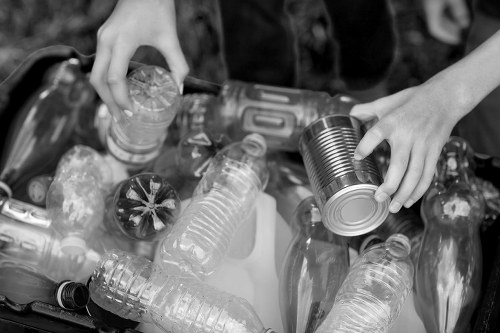
Understanding Construction Waste Clearance
Construction waste clearance is a critical process in maintaining the cleanliness and sustainability of construction sites. In Marylebone, a bustling area known for its architectural heritage and ongoing development projects, effective waste management plays a pivotal role in ensuring projects are completed efficiently and responsibly.
Proper waste clearance not only helps in complying with local regulations but also promotes environmental conservation. By systematically removing debris, materials, and other waste from construction sites, businesses can minimize their ecological footprint and contribute to a healthier community.
Marylebone, with its mix of historic buildings and modern developments, presents unique challenges and opportunities for construction waste management. Understanding the local context is essential for implementing effective clearance strategies that align with both regulatory requirements and community expectations.
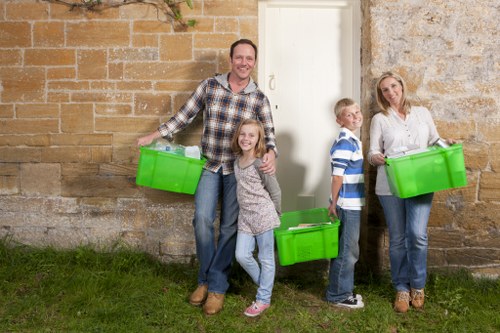
Types of Construction Waste
Construction projects generate a variety of waste materials, each requiring specific handling and disposal methods. Common types of construction waste in Marylebone include:
- Concrete and Masonry: Excess concrete, bricks, and blocks.
- Wood: Timber, plywood, and scrap wood from framing and finishing work.
- Metals: Steel, aluminum, and other metal scraps.
- Plastics: Pipes, vinyl materials, and packaging.
- Green Waste: Landscaping debris and plant materials.
Each type of waste must be sorted and processed appropriately to ensure efficient recycling or safe disposal. Specialized services in Marylebone cater to these needs, providing tailored solutions for different waste streams.
Effective segregation at the source is a best practice that facilitates recycling and reduces the burden on landfill sites. By categorizing waste during the construction process, companies can improve waste management efficiency and sustainability.
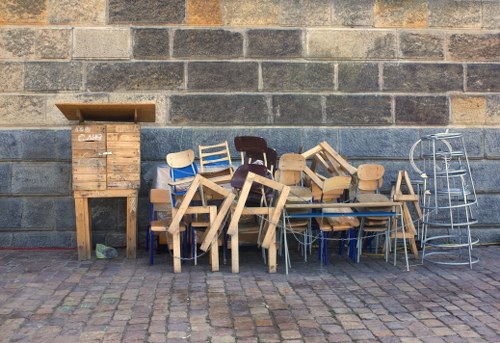
Benefits of Professional Waste Clearance
Engaging professional construction waste clearance services in Marylebone offers numerous advantages:
- Compliance: Ensures adherence to local laws and regulations regarding waste disposal.
- Efficiency: Streamlines the waste removal process, saving time and resources.
- Environmental Impact: Promotes recycling and reduces landfill usage.
- Safety: Minimizes hazards on construction sites by removing debris promptly.
- Cost-Effective: Reduces the financial burden associated with improper waste management.
Professional services bring expertise and specialized equipment to handle diverse waste types, ensuring that clearance is performed systematically and effectively.
Moreover, partnering with experienced waste clearance providers can lead to long-term cost savings by optimizing resource use and minimizing waste generation.
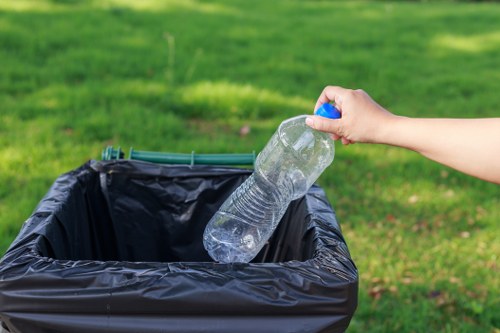
Choosing the Right Waste Clearance Service in Marylebone
Selecting a reliable construction waste clearance service is crucial for project success. Here are key factors to consider:
- Experience: Look for companies with a proven track record in handling construction waste in Marylebone.
- Certification: Ensure the service provider complies with environmental standards and holds necessary licenses.
- Comprehensive Services: Opt for providers offering a full range of services, including waste collection, sorting, recycling, and disposal.
- Flexible Scheduling: Choose a service that can accommodate your project timelines and schedules.
- Transparent Pricing: Transparent and competitive pricing models help avoid unexpected costs.
By evaluating these factors, construction companies can partner with waste clearance services that align with their operational needs and sustainability goals.
Additionally, reading reviews and seeking recommendations can provide insights into the reliability and quality of the service provider.
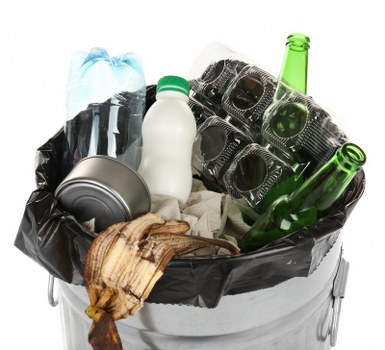
Environmental Regulations in Marylebone
Marylebone adheres to strict environmental regulations to manage construction waste effectively. These regulations aim to reduce the environmental impact of construction activities and promote sustainable practices. Key regulatory aspects include:
- Waste Segregation: Mandatory separation of recyclable materials from general waste.
- Recycling Targets: Specific percentage targets for recycling construction waste.
- Proper Disposal: Guidelines for the safe disposal of hazardous and non-recyclable waste.
- Reporting Requirements: Regular reporting of waste generation and disposal activities.
- Penalties: Fines and sanctions for non-compliance with waste management regulations.
Understanding and adhering to these regulations is essential for construction companies operating in Marylebone. Professional waste clearance services are well-versed in these requirements and can help ensure compliance.
Additionally, staying informed about updates to environmental laws can help businesses maintain best practices in waste management.

Recycling and Reuse Opportunities
Marylebone offers numerous opportunities for recycling and reusing construction materials, contributing to a circular economy. Prominent recycling options include:
- Concrete Recycling: Crushed concrete can be used as aggregate in new construction projects.
- Metal Recycling: Metals can be melted down and repurposed for various industrial uses.
- Wood Reuse: Salvaged timber can be reused in new building projects or repurposed into furniture.
- Plastics: Certain plastics can be recycled and manufactured into new products.
- Green Waste: Organic materials can be composted and used for landscaping or agricultural purposes.
Implementing recycling and reuse strategies not only reduces waste but also lowers costs and conserves natural resources.
By collaborating with waste clearance services that prioritize recycling, construction companies in Marylebone can achieve their sustainability targets and enhance their environmental stewardship.

Innovative Waste Management Techniques
Advancements in waste management technology have introduced innovative techniques for more efficient construction waste clearance. Some of these include:
- Automated Sorting Systems: Utilize machinery to categorize and separate different waste materials quickly.
- On-Site Recycling: Implement recycling units directly on construction sites to process waste in real-time.
- Waste Tracking Software: Software solutions to monitor waste generation, sorting, and disposal activities.
- Eco-Friendly Disposal Methods: Use of green disposal techniques that minimize environmental impact.
- Zero-Waste Initiatives: Strategies aimed at eliminating waste generation through careful planning and resource optimization.
These innovative approaches enhance the efficiency and effectiveness of waste clearance operations, leading to better outcomes for both construction companies and the environment.
Adopting such technologies can give businesses a competitive edge and demonstrate a commitment to sustainability.

Cost Benefits of Efficient Waste Clearance
Efficient construction waste clearance can lead to significant cost savings for construction projects. Key cost benefits include:
- Reduced Disposal Fees: Minimizing the volume of waste reduces the costs associated with transportation and disposal.
- Recycling Revenue: Selling recyclable materials can generate additional income.
- Project Timeliness: Efficient waste removal prevents delays, ensuring projects stay on schedule.
- Resource Optimization: Better waste management leads to more effective use of materials, reducing overall expenses.
- Compliance Savings: Avoiding fines and penalties related to improper waste disposal.
By investing in professional waste clearance services, construction companies can optimize their budget allocation and improve overall project profitability.
Additionally, cost savings from efficient waste management can be reinvested into other aspects of the project, enhancing its quality and scope.

Case Studies: Successful Waste Clearance in Marylebone
Several construction projects in Marylebone have successfully implemented effective waste clearance strategies, serving as models for best practices:
- Project A: A large residential development achieved a 70% recycling rate by partnering with a local waste clearance service.
- Project B: A commercial office building project minimized landfill usage by adopting on-site recycling and waste segregation techniques.
- Project C: A heritage building restoration incorporated eco-friendly disposal methods to preserve the historical site while managing waste responsibly.
These examples highlight the positive impact of strategic waste management on project success and environmental sustainability.
Learning from these case studies can help other projects in Marylebone adopt similar practices, leading to improved outcomes and community benefits.

Future Trends in Construction Waste Clearance
The construction waste management landscape is evolving, with several emerging trends shaping its future in Marylebone:
- Increased Automation: Greater use of robotics and AI for waste sorting and processing.
- Sustainable Materials: Rising demand for eco-friendly and recyclable construction materials.
- Digital Integration: Enhanced use of digital tools for tracking and managing waste.
- Circular Economy Models: Emphasis on reusing materials to create a closed-loop system.
- Policy Enhancements: Stricter regulations and incentives promoting responsible waste management.
Staying abreast of these trends enables construction companies to adapt and innovate their waste clearance practices, ensuring long-term sustainability and compliance.
Embracing these developments can also provide competitive advantages and align businesses with global sustainability goals.

Implementing Best Practices in Waste Management
Adopting best practices in construction waste clearance can significantly improve efficiency and sustainability. Key practices include:
- Early Planning: Integrate waste management strategies into project planning stages.
- Employee Training: Educate staff on proper waste segregation and handling procedures.
- Regular Audits: Conduct periodic reviews of waste management processes to identify areas for improvement.
- Supplier Collaboration: Work with suppliers to reduce packaging waste and promote recyclable materials.
- Community Engagement: Involve the local community in sustainability initiatives and waste reduction efforts.
Implementing these practices fosters a culture of sustainability and ensures that waste management is seamlessly integrated into every aspect of the construction process.
Continuous improvement and commitment to best practices are essential for achieving long-term success in waste clearance and environmental stewardship.

Technology Solutions for Waste Clearance
Leveraging technology is essential for modern construction waste clearance. Innovative tools and systems include:
- Waste Management Software: Streamline tracking, reporting, and optimizing waste processes.
- GPS Fleet Tracking: Monitor waste collection vehicles for efficiency and route optimization.
- IoT Sensors: Real-time monitoring of waste bins and containers to manage fill levels and pickups.
- Data Analytics: Analyze waste generation patterns to inform reduction strategies.
- Mobile Applications: Facilitate communication and coordination between construction teams and waste clearance services.
These technology solutions enhance the precision and responsiveness of waste management operations, leading to more effective and sustainable outcomes.
Adopting such technologies can also provide valuable insights into waste generation and disposal, aiding in continuous improvement efforts.

Sustainable Practices for Future Projects
Looking ahead, sustainable waste management practices will be increasingly important for construction projects in Marylebone. Future-focused strategies include:
- Zero-Waste Certifications: Achieving certifications that recognize comprehensive waste management efforts.
- Renewable Energy Integration: Utilizing solar and wind power to run waste processing facilities.
- Biodegradable Materials: Incorporating materials that break down naturally, reducing long-term environmental impact.
- Modular Construction: Prefabricated components that minimize on-site waste generation.
- Green Building Standards: Adhering to standards like LEED to promote sustainable construction practices.
Embracing these sustainable practices will not only benefit the environment but also enhance the reputation and appeal of construction projects in the competitive Marylebone market.
Proactive adoption of sustainable methods is essential for future-proofing construction businesses and meeting evolving industry standards.
Ready to streamline your construction waste clearance in Marylebone? Contact us today to learn how our expert services can help your project stay clean, compliant, and sustainable.